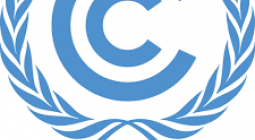Climate ‘loss and damage’: why it’s such a big deal at Cop27

Global heating crisis is felt most by countries that are least to blame, so reparations are central to demands for climate justice
Supercharged extreme weather events are striking every corner of the globe, and every year seems scarier than the last. The climate is breaking down much faster than even the worst case scenario predictions – way too fast and erratically for even the richest countries to adequately adapt and prepare.
It’s a perverse reality that the countries and communities that have contributed least to the greenhouse gases heating the planet are suffering the most – and are least equipped to cope with the death and destruction. After a catastrophic year that left 37 million people facing hunger and starvation in the drought-stricken greater Horn of Africa and a third of Pakistan under water due to unprecedented rainfall, expect to hear lots about loss and damage at Cop27.
But what does it mean, and why is it so contentious?
What is loss and damage?
Loss and damage refers to the irreversible economic and non-economic costs of both extreme weather events such as hurricanes, heatwaves, drought and wildfires, and slow onset climate disasters such as sea-level rise and melting glaciers. It’s about holding the biggest fossil fuel polluters liable for the pain and suffering already caused by the climate crisis, separately and in addition to securing climate finance for mitigation and adaptation to help developing nations prepare for what’s coming.
Economic costs include the lives, livelihoods, homes, food systems and territory irreversibly lost, while the harder to quantify non-economic costs refer to the loss of culture, identity, sovereignty, human dignity, biodiversity, and psychological well being. The most serious losses and damages are being felt by the poorest countries – by and large those who’ve contributed least to global heating. As a result, funding for loss and damage has become a central tenet in demands for climate justice or, in other words, climate action that addresses the inequities behind the climate crisis.
Why are we talking about it now?
Island nations and other climate vulnerable countries started raising loss and damage more than 30 years ago, but it’s become an increasingly prominent and contentious issue at the UN climate talks in the past decade or so as the speed, magnitude and cost of global heating has become apparent. At the 2021 summit, Cop26 in Glasgow, a coalition of mostly developing nations representing six out of every seven people in the world called for the countries most responsible for greenhouse gas emissions to commit to pledging money for loss and damage.
Unsurprisingly, perhaps, given the UK’s role as Cop26 president, their call for new financial support under article 9 of the Paris agreement (in addition to funds for adaptation and mitigation) was rejected amid opposition from the US, EU, Australia and others. Almost all references were removed in the final agreement, the Glasgow Climate Pact, and instead the Glasgow dialogue was established, ostensibly to agree on a clear path and process for loss and damage finance.
Who’s for it, who’s against it?
By and large, developing countries, which often negotiate and vote in a block called G77, are for it as they are already suffering disproportionate irreversible damage. The richer nations responsible for the vast majority of greenhouse gases since the industrial age – and which would therefore be liable to cough up – are against it.
Exceptions include Denmark, which has promised 100m Danish kroner (£11.7m) to developing nations for climate losses, the first EU country to do so, as well as Scotland and the Belgian region of Wallonia. At this year’s UN general assembly, the UN chief, António Guterres, described loss and damage as a “fundamental question of climate justice, international solidarity and trust” – adding that “polluters must pay” because “vulnerable countries need meaningful action”.
Will Cop27 be any different?
Human rights groups have criticised the decision to hold this year’s summit in Sharm el-Sheikh, Egypt, due to the authoritarian regime’s dire track record on free speech, protest and independent research. But it was Africa’s turn and Egypt was nominated by the African nations, in part because of its strong stance on loss and damage, as well as its respected negotiators, who they hope will be navigate through western delaying tactics.
In a boost to developing nations, loss and damage was spotlighted in this year’s IPCC report despite opposition by the US, whose main goal is to provide climate finance in the form of loans not grants. Still, western economies are reeling from the pandemic and Russia’s war in Ukraine, and the US climate envoy, John Kerry, made America’s position clear when he said that focusing on loss and damage “could delay our ability to do the most important thing of all, which is [to] achieve mitigation sufficient to reduce the level of adaptation”.
Nevertheless, it is expected to be one of the dominant themes at Cop27 and is a red line in the negotiations for many developing countries including Pakistan, which holds the presidency for the G77 and China and has been devastated by floods and extreme heat this year. Pakistan’s climate minister, Sherry Rehman, told the Guardian: “We are on the frontline and intend to keep loss and damage and adapting to climate catastrophes at the core of our arguments and negotiations. There will be no moving away from that.”






